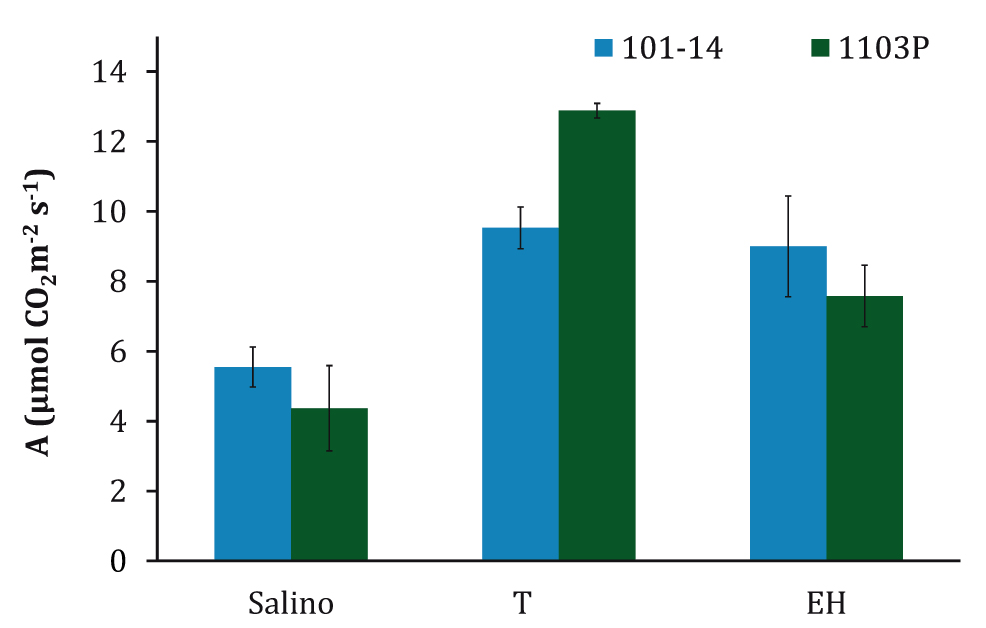Comparing water deficit and saline stress between 1103P and 101-14Mgt rootstocks, grafted with Cabernet Sauvignon
Keywords:
Vitis vinifera L., salinity tolerance, water deficit, 1103P, 101-14MgtAbstract
In arid regions under irrigation, vineyards often face water deficit and salinity. As these stressors often occur simultaneously, it is difficult to assess their individual relative severity. The aim of this work was to independently study the physiological responses of grapevine to salinity and water deficit, in order to understand and compare their effects. A pot trial was designed, grafting Cabernet Sauvignon onto 1103P and 101-14 Mgt. Three treatments were evaluated: saline irrigation (Salino; 80 mM ClNa and field capacity), water stress (EH; 0,4 faction of soil transpirable water and 2 mM NaCl) and a control (T; without any stress factors, field capacity and 2mM NaCl). After 54 days, Salino showed smaller effect on leaf area (AF) and shoot length than EH. AF diminished 53% for Salino, while for EH, AF was reduced in a 78% with respect to T. Shoot length diminished 68% for Salino and 83% for EH. Total biomass did not show any difference between both stresses, falling 52% for both situations. However, regarding the biomass partitioning, Salino had higher canopy dry weight while EH showed higher root dry weight. Midday leaf water potential was -1,3 MPa for Salino and EH and -0,9 MPa for T. Although stomatal conductance was similarly reduced for both stress treatments (-41% compared to T), with no differences between rootstocks; an interaction was found between the type of stress and rootstock for net photosynthesis. Finally, 1103P showed a higher Na+ exclusion power than 101-14Mgt (accumulating 21% less Na+ in the plant). Even though the behavior of the Cabernet sauvignon scion was similar for both rootstocks, the higher exclusion that 1103P showed may indicate possible better performances upon salinity.

Downloads
Published
Issue
Section
License
Aquellos autores/as que tengan publicaciones con esta revista, aceptan las Políticas Editoriales.


